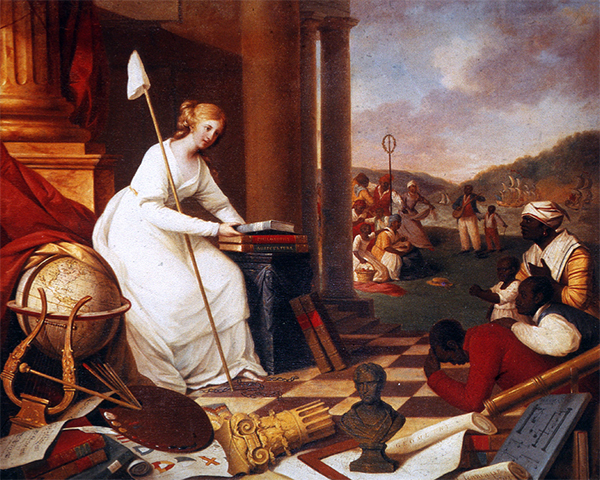A Collaborative Exhibition produced in association with the Seminar on the History of Material Texts, University of Pennsylvania (November 4, 2002 - April 3, 2003)
Curators: Peter Stallybrass and Associate Librarian James Green
The history of the book is an exciting new field of study. "Material Texts" brings it to the forefront for students, scholars, and the general public. As texts written or printed on paper and bound in leather or cloth are being supplemented or replaced by electronic texts, historians are beginning to recognize how important the material circumstances of the production, distribution, and consumption of books are to understanding the words and images they embody. More books exploring these ideas are being published every year, but ironically they are unable to convey effectively the materiality they examine. It must be seen in the round and in real life. "Material Texts" presents a dazzling variety of Library Company books in a context that provokes the viewer to reconsider some of the most common ideas about how books were made, remade, and unmade by authors, printers, publishers, and readers in early modern Europe and America.
The exhibition presents in seven sections. It opens with a rare 1930s silent documentary film that vividly shows the sheer backbreaking labor that was required to make paper, which was the single greatest expense in book production. That expense was the controlling factor in determining whether a book was large or small, long or short. The second and third sections argue that "printers don't make books." They print large sheets of paper that have to be folded, sewn, trimmed, and bound together; but the real makers of books were binders. Their work determined not only the form of texts but also their content, which often varied from one supposedly identical copy to another.
The fourth section argues that "authors don't write books." Publishing decisions were made as much by typesetters, editors, and publishers. The publisher was another key figure but a shadowy one until relatively modern times. To bring him into the light, this section traces the strange publishing history of the first modern novel, Samuel Richardson's Pamela. It was mainly read in abridgments and adaptations as a children's book, an etiquette book, a model for letter writers, and a play, none of which the author had any role in producing. The fifth section, "books are more than printed words", displays wood blocks and copper plates, used to print pictures by yet another trade independent of both printers and authors. Often pictures alter or contradict the meaning of the texts they illustrate and were regularly reused with different texts long after the type they originally accompanied was broken up.
The sixth section demonstrates the role readers played in modifying (and in a sense completing) the work of printers, binders, publishers, and illustrators. They added marginalia, indexes, and cross-references, and in some cases actually altered the text to suit their taste or politics, as when Philadelphia's post-Revolutionary Bishop White crossed out references to King George in his prayer book and substituted the President and Congress.
The final section explores one of the many ways that books got into the hands of readers, by taking a fresh look at Samuel Jennings' iconic painting "Liberty Displaying the Arts and Sciences," painted for the Library Company in 1792 and only rarely exhibited. A woman personifying Liberty, surrounded by books and emblems of the arts and sciences, presents a small gray book to a group of freed slaves, while others celebrate their liberation in the background. The book she presents is the catalogue of the Library Company, a potent symbol of public access to the whole universe of books and the knowledge preserved in them.
Material Texts
November 18, 2002 (Monday) / 5:00 pm
The Library Company of Philadelphia
1314 Locust Street, Philadelphia



